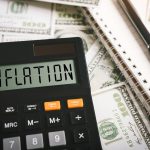
According to an old Wall Street expression, “Everyone’s a genius during a bull market.”
The obvious corollary is that everyone’s a dummy during a bear market… except maybe for a few dedicated short-sellers.
During the last couple of years, for example, many of we investors have spent a lot more time feeling like a dummy than a genius. That’s because the stock market has been providing more opportunities to lose money than to make it.
Even the high-profile names that have produced heroic performances this year are showing losses over the last two years. For example, Alphabet Inc. (GOOGL) is up 46% year-to-date but down 11% since the end of 2021. Similarly, Amazon.com Inc. (AMZN) is up 65% year-to-date but down 17% since year-end 2021.
Within the universe of small-to-mid-cap names, the stock market has been even less hospitable. The Russell 2000 Index and the S&P SmallCap 600 Index have both slumped more than 20% since the end of 2021.
In market environments like these, investing is no walk in the park; it is more like a walk in a minefield. No matter how many successful steps you might take, you’re bound to take a costly step at some point.
An easy comparison comes from an American pastime…
Knocking It Out of the Park
As a result of these challenging conditions, the financial markets are starting to feel like an endless game of “Opposite Day.” The investment tactics that have succeeded for decades are failing; the professional investors who have produced enviable long-term track records are struggling.
For nearly three decades, a guy named Dan Loeb has been running one of the most successful hedge funds in the country. It’s called “Third Point,” and during its first 25 years of operation, the fund produced a 15.1% net annualized return – well above the S&P 500’s 9.6% return during that same timeframe.
The difference between 15.1% per year and 9.6% might seem inconsequential until you calculate the effects of compounding. A return of 9.6% per year over 25 years turns $10,000 into $98,915. But a 15.1% return turns that same $10,000 into more than $335,000.
Loeb’s superb 25-year run ended in 2021. Since then, the results have been all downhill. From the start of 2022 through June of this year, Third Point produced a net loss of 24.0% compared to the S&P 500’s loss of just 4.3%.
“I’m not thrilled with the results,” Loeb admitted recently, “but each time we’ve had a 20% drawdown, we’ve more than made up for them.”
Third Point’s struggles are hardly unique. Even many traditionally conservative strategies are producing a failing grade.
As The Wall Street Journal reported in a story last month…
Over their 50 years of marriage, Dave and Kathy Lindenstruth adopted a time-honored Wall Street strategy to safeguard and grow their retirement nest egg: a mix of 60% U.S. stocks and 40% bonds known as the 60-40 portfolio. Now, it is failing them…
The tried-and-true 60-40 portfolio lost 17% last year, its worst performance since at least 1937, according to Leuthold Group analysis…
Now, many feel 2022’s battering of both stocks and bonds could be the start of a protracted slump.
I disagree. I would take the other side of that trade. More than likely, the stock and bond markets are closer to the end of a “protracted slump” than they are to the beginning of one.
Successful long-term strategies don’t usually go “poof” in the blink of an eye. Neither do Hall of Fame investors forget what has been producing their decades of success. Sometimes, they simply go into a slump… just like Hall of Fame baseball players do.
At the start of the 1965 baseball season, a 34-year-old Willie Mays was starting a new season with high hopes. After all, during the preceding 10 years, Mays had racked up 388 home runs, 93 triples, and 1,184 runs – more than any other player during that time span.
He started the season brilliantly by hitting .339 through mid-July. But then something odd happened; Mays seemingly “forgot” how to hit. He batted just .125 during the second half of July – capped by a miserable 0-for-22 stretch.
Was Mays finally over the hill? Had he become a has-been?
Hardly. He busted out of his slump in early August, on his way to hitting .312 for the season. He also slugged a career-high 52 home runs and knocked in 112 runs.
Those achievements earned Mays his second career MVP award. The Giant Hall of Famer would play another eight seasons before finally retiring.
The Yankee legend Lou Gehrig also endured a lengthy batting slump en route to winning an MVP award. Late in the 1936 season, Gehrig went 0-for-20 during a six-game stretch. Nevertheless, he finished the season with 49 home runs and a .354 batting average. Those numbers earned him his second and last MVP award.
Winning is hard, both in professional sports and in the financial markets. But winning is much easier when you remain faithful to a prudent, long-term strategy.
All of us will “whiff” at the plate from time to time, especially during bear market phases. But our inevitable short-term slumps do not invalidate a thoughtful long-term strategy.
Sometimes, especially during bear markets, we simply don’t see very many good pitches to hit. That’s not our fault. We don’t control every variable.
But what we can control is stock selection and patience.
Obviously, the stock market does not always reward patience with robust returns. But unless we investors exercise patience, we will never enable great stocks to deliver outsized gains.
During bull markets, we grow accustomed to “easy gains” and immediate gratification. Eventually, we start to believe that rapid success is “normal”… and to expect that we will always be right, right now.
Bear markets are the opposite. They remind us that investment success rarely arrives as quickly and painlessly as we would like. But bear markets are simply part of the investment game. They are the “price of admission” to outstanding long-term gains.
But as I’ve said before, patience is something of a “superpower” in the stock market.
And on Saturday, we’ll discuss a prime example of why patience pays off.
Stay tuned.
Regards,
Eric
P.S. Part man and part machine, my “Extreme Alpha 2.0” can identify the exact stocks that could soar 1,000% or more… no matter which way the market is headed. Click here to discover how to see it in action.





